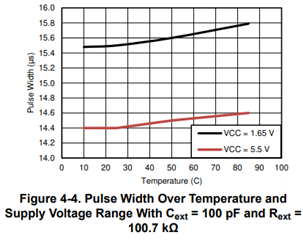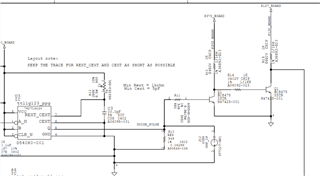Hi TI team,
Appreciated that if TI team could help to confirm that by using Cext = 30pF and potentiometer, Rext from 1kohm to 100kohm can be used to generate the pulse duration of 0.1us, 0.2us, 0.5us, 1us, 5us and 10us.
What are the other factors that may affect the accuracy of the pulse duration ?
Thanks in advanced.





